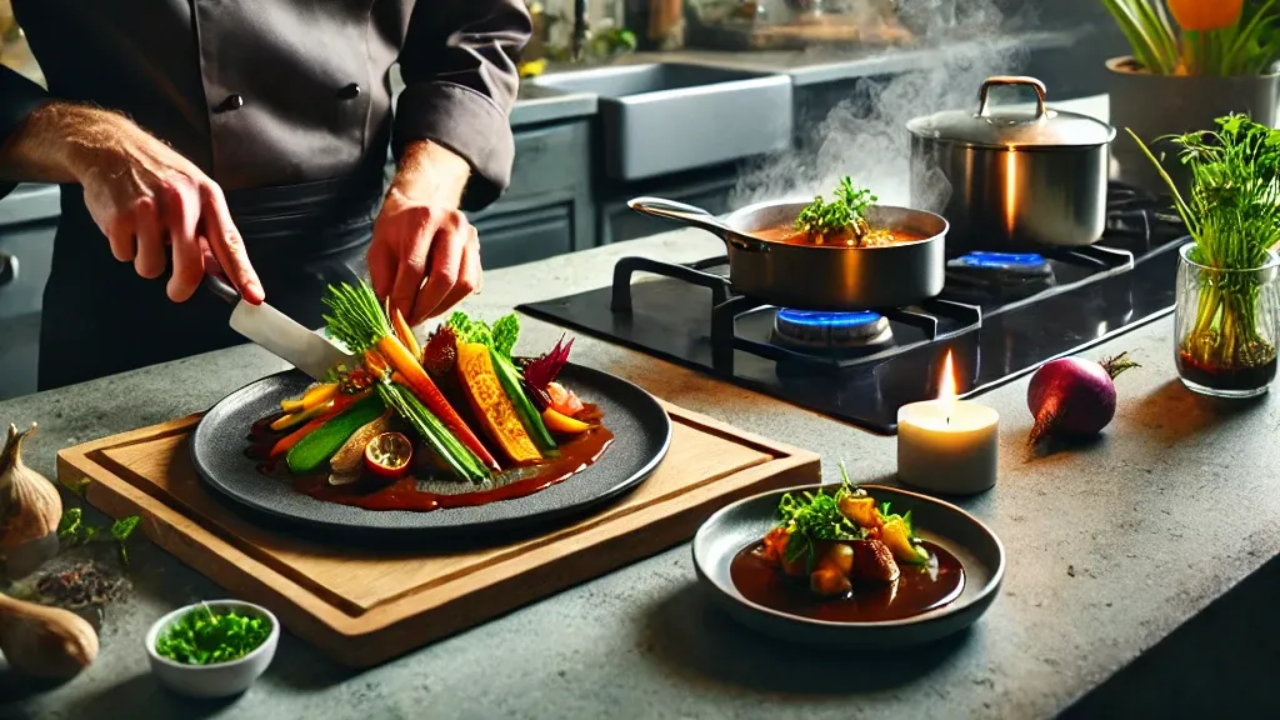How to Elevate Your Vegan Cooking with Michelin-Trained Techniques

Cooking plant-based meals can be a delightful and rewarding experience, but if you’re looking to take your vegan dishes to the next level, why not borrow some techniques from the world’s top chefs? Michelin-trained techniques aren’t just for restaurants; they can be adapted to home cooking to create restaurant-quality meals that will impress even the most discerning palates. Here’s how you can elevate your vegan cooking with tips and tricks inspired by Michelin-starred kitchens.
Master the Art of Knife Skills
Professional chefs understand that precision starts with the knife. Proper knife skills are essential not just for safety but also for consistency in cooking. In a Michelin kitchen, chefs are trained to execute cuts that are uniform in size and shape, which ensures even cooking and a beautiful presentation. For instance, learning to julienne vegetables for a salad or dice onions for a stew can make a significant difference in the final dish.
Start by investing in a good-quality chef’s knife and learning how to maintain it. Regularly honing your knife and using a proper cutting technique will make your prep work faster and more efficient. Practice basic cuts like chiffonade, brunoise, and julienne, and soon you’ll find that your vegan dishes look more refined and cook more evenly.
Develop Complex Flavors with Layering
One of the hallmarks of Michelin-starred cuisine is the depth of flavor, often achieved by layering ingredients and cooking methods. In vegan cooking, where the richness of meat-based broths and fats might be absent, developing complex flavors becomes even more critical.
To build layers of flavor, start by sautéing aromatics like onions, garlic, and leeks. Then, deglaze the pan with wine or a vinegar to lift the caramelized bits that stick to the bottom. Adding a touch of umami through ingredients like miso, soy sauce, or nutritional yeast can also enhance the richness of your dishes. Slow-cooking and reducing sauces can intensify flavors and create a luxurious texture, while finishing with a splash of acidity or fresh herbs can brighten up the dish.
Precision in Temperature Control
Michelin-starred chefs are masters of temperature control, understanding how the slightest variations can affect the outcome of a dish. In vegan cooking, this skill is particularly important when dealing with plant-based proteins and delicate vegetables.
For instance, tofu, when cooked at the right temperature, can develop a crispy exterior while remaining tender inside. On the other hand, overcooking vegetables can result in a loss of nutrients and flavor. Using a food thermometer can help you achieve the perfect doneness for your plant-based proteins. Moreover, experimenting with different cooking techniques—such as blanching, roasting, and steaming—can help you find the best way to prepare each ingredient.
Master Sauces and Dressings
Sauces and dressings are often the secret to turning a good dish into a great one. Michelin chefs spend years perfecting the art of sauce-making, and while vegan sauces might not rely on traditional bases like butter or cream, there are plenty of ways to create rich, flavorful sauces that enhance your dishes.
A good starting point is mastering the five mother sauces, which you can adapt with plant-based ingredients. For example, a béchamel sauce can be made with plant-based milk and vegan butter, while a velouté can be created using vegetable stock. Additionally, exploring emulsions like vinaigrettes or learning how to create creamy dressings with nuts and seeds can add a professional touch to your salads and grain bowls.
Embrace Plating and Presentation
In Michelin-starred restaurants, the presentation is as important as the taste. A well-plated dish not only looks appealing but also enhances the dining experience by guiding how each element is tasted.
To bring this into your kitchen, focus on color contrast, texture variation, and balance. For example, pairing bright vegetables with grains or legumes provides visual appeal. Using garnishes like microgreens or edible flowers can add a pop of color, while drizzling sauces artfully over the dish can give it that restaurant-worthy finish. Investing in simple plating tools, like ring molds or squeeze bottles, can help you achieve more precise and elegant presentations.
Experiment with Fermentation
Fermentation is a technique used in many Michelin kitchens to add complexity and depth to dishes. It’s a process that can be easily adapted to vegan cooking to create unique flavors.
Fermented foods like kimchi, sauerkraut, and tempeh not only add a tangy kick but also boost the nutritional content of your meals with probiotics. You can start by making simple ferments at home, like pickled vegetables or kombucha, and gradually experiment with more complex recipes. Incorporating fermented ingredients into your dishes can introduce a new dimension of flavor that elevates your cooking.
Conclusion
By incorporating Michelin-trained techniques into your vegan cooking, you can elevate your dishes from everyday meals to culinary masterpieces. Whether it's mastering knife skills, perfecting sauces, or enhancing presentation, these tips will help you bring restaurant-quality dishes into your home kitchen. For more advanced techniques and professional guidance, consider enrolling in the "Cook Like a Pro" course at All About Greens, where you can learn how to apply these techniques and more to your plant-based cooking.

